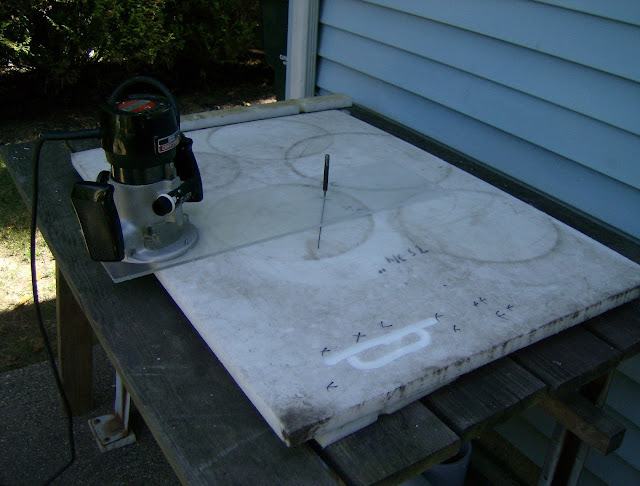Cutting the new sheave from a large square. Six passes with router were needed to make a complete cut on
one inch material. Below, an acrylic panel fastened to the bottom of the router acts as a circular guide around the center pin.
The original 16 inch flange/sheave is shown resting on the new sheave material. Why the bigger pulley ?
Slower travel speed and increased torque for large diameter wires are pluses. .052", .062" (1/16) and 3/32" wires are more easily wound at slower speed. Operator control is the name of the game.
The head stock design will determine your surface winding speed and torque for wire forming.
The white plastic base is 1 inch thick HDPE sheet cut from a scrap square and bolted to a 4" schedule 80 flange. A router used for woodworking is indispensable for this work. Setup is simple. The machine does it's job flawlessly, but keep a supply of garbage bags on hand. You will empty your ShopVac reservoir several times as your work progresses.
Before final assembly with the mounting hardware, a router is used to create the groove for the drive belt. My thanks to redneckdiy.com for instructions on this method. The sheave is now ready for action.
The stub in the flange is schedule 80 stock. Standard PVC cement holds it in place. This is the interface between the fixture and the work piece.
The finished sheave has a inside diameter of 23 inches. Weight with hardware is 22.2 pounds.
Note the small grey bracket to the right of the flange. This supports my Digital Turns Counter; a pedometer compliments of the local health & wellness expo.





No comments:
Post a Comment